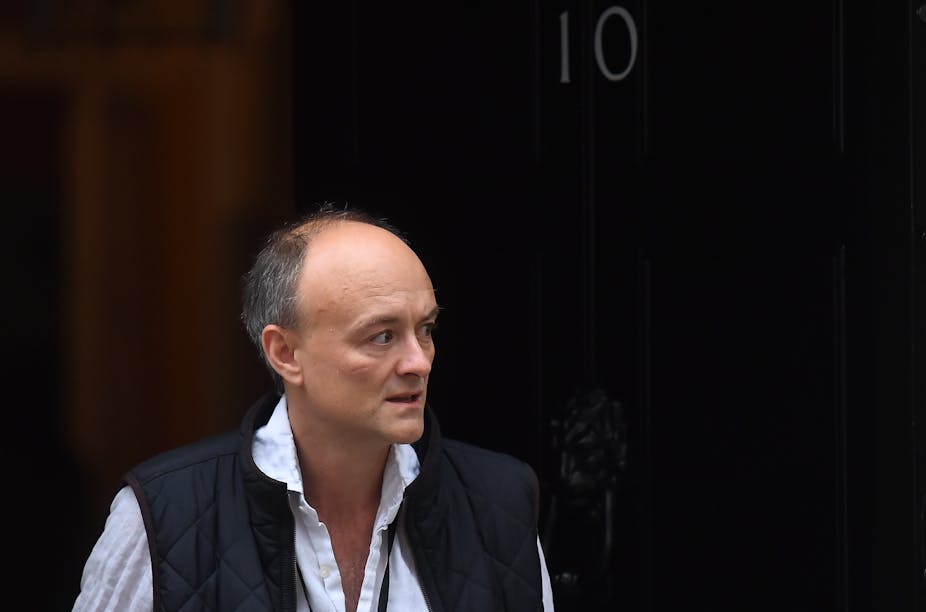Dominic Cummings, special adviser to the UK prime minister, has been continuing his shake-up of the civil service. Most notably, his plea for “misfits and weirdos” resulted in the appointment of Andrew Sabisky, who was forced to resign after his eugenicist views on the supposed link between race and intelligence came to light.
Cummings is re-imagining the civil service as a force for disruption and innovation along the lines of Silicon Valley. He has been open about his infatuation with the Valley’s peculiar brand of technological utopianism, which imagines a future in which AI and computer forecasting are used to guide policy.
We should be wary of interpreting this shake up as truly progressive. This vision of the future is overwhelmingly white and male. Cummings shuns what he calls “gender identity diversity blah blah” and advocates for “true cognitive diversity”.
However, his is not the first attempt at remodelling the civil service with the help of pseudoscientific thinking. In fact, the civil service experimented with an eccentric approach to recruitment in the 1940s. This post-war scheme also mobilised pseudoscientific concepts of intelligence, character and personality, all of which reflected a discriminatory set of values as to who was “fit” to do the job.
The civil service’s experiment in psychological methods of recruiting was directly influenced by a method of selection pioneered by the War Office. Concerns about the high failure rate of junior officers undergoing training prompted officials in the War Office to rethink their recruitment process. Following experiments by army psychiatrists, the first War Office Selection Board was established in Edinburgh in 1942, with others opening across Britain that same year.

Under this new scheme, candidates were taken to a country house and given a series of assessments over the course of three days. Potential officers took part in a role-play scenario to test their decision-making and teamwork skills as well as a series of what were called “personality pointers”. These included a word association test, a self-description exercise and a “thematic appreciation test”. Here, candidates were required to make up stories using a series of images as prompts. These were analysed for evidence of their aptitude and mental capability for the officer class.
The Treasury requested the War Office’s help in adapting this system to select civil service officers for the new Organisation and Methods division. This section was tasked with increasing efficiency in the civil service following its rapid expansion as a result of the war. The new “Organisation and Methods man” possessed initiative, flexibility and independence. Recruiters saw these traits as new qualities suitable for a reformed, streamlined civil service. They were to be as important in the selection of candidates as the old personality traits of reliability, accuracy and knowledge of precedent.
This experiment proved flawed, however. Senior members of the civil service and experienced members of the War Office Selection Boards came together to grade those who took the experimental test. Both groups gave wildly different marks to candidates.
The War Office even failed some candidates. And since everyone who took the experimental test was already employed in the civil service, this was a serious problem.
An unflattering postmortem
All this meant that when the selection process was held up to scientific scrutiny it appeared to fall apart. The report on the experiment tried hard to work out why this might be the case, spending pages upon pages on increasingly complicated statistics.
What none of these calculations did is challenge the basic, and flawed, assumption behind the experiment – personality traits cannot, as they thought, be objectively observed as incontrovertible facts. They are subjective judgements, the result of the interaction between the observer and the observed.
The role that the fledgling discipline of psychology played in these recruitment schemes was a discriminatory one. The personality tests were an attempt to weed out people with “immature” personalities: a euphemism for homosexuality. Potential junior officers or civil servant guinea pigs took intelligence tests alongside the “personality pointers”. Although they were seen as an objective test of natural intellect, they often reflected no more than the individual’s level of schooling, at a time when education provision was even more unequal than it is today. These intelligence tests have their modern counterpart in the IQ tests so admired by Cummings and Sabisky.
Although these tests were designed in response to criticisms of the army’s elitism, the ways in which the tests attempted to police the boundaries of who was suitable ended up reflecting the same social prejudices the army and civil service had long struggled with.
Cummings’ call for “misfits and weirdos” is similarly superficial. His slavish devotion to techie solutions will continue to favour white, middle-class male computer scientists who don’t look any different from the “Oxbridge humanities graduates” who have tended to make up the civil service.
True diversity looks very different from Cummings’ vision. His and Sabisky’s worrying views on intelligence indicate how little space there is for neurodiverse individuals, disabled people or people of colour within Whitehall. Criticisms of the establishment are always welcome, but what the civil service and the War Office selection boards tell us is that wacky means of recruitment can be a smokescreen obscuring any real progress.
A supposedly meritocratic means of selection, either by personality test or by blogpost, hides the assumptions and biases of those doing the recruiting. More often than not, people pick those who resemble them physically and socially – and who share the same values. A commitment to true diversity is commendable. Unfortunately, I do not see that commitment from Cummings.

